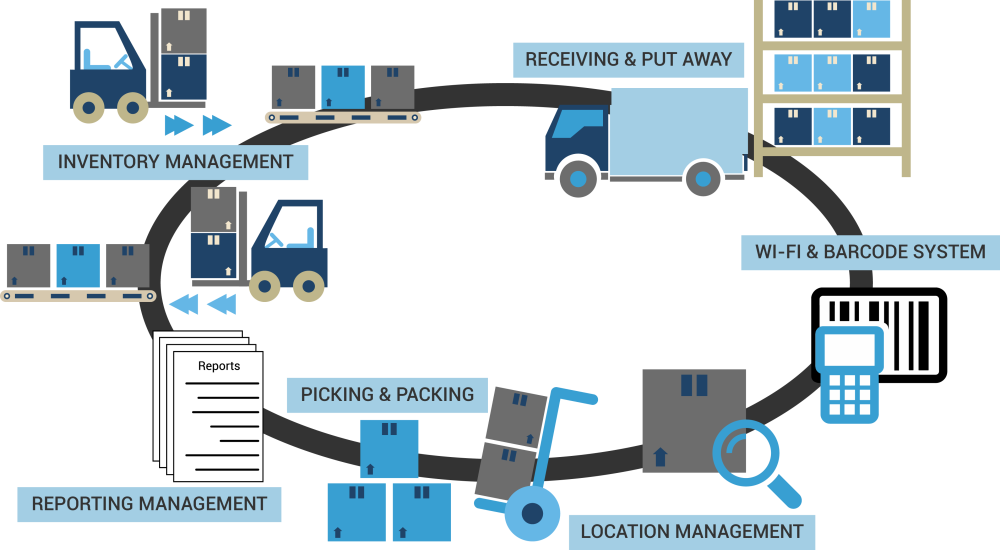
Image Source: Google
In today's fast-paced and competitive business environment, efficient warehouse management is crucial for the success of any company. With the increasing demands of customers for faster delivery times and accurate order fulfillment, companies need to stay ahead of the curve by implementing advanced technologies like Warehouse Management Systems (WMS). In this article, we will explore the benefits of implementing a WMS and how it can help businesses optimize their warehouse operations.
What is a Warehouse Management System?
A Warehouse Management System (WMS) is a software application that helps manage and control the day-to-day operations in a warehouse. It provides real-time visibility of inventory levels, automates processes such as receiving, picking, packing, and shipping, and helps streamline warehouse operations for increased efficiency and accuracy. Refer Link: https://www.erp.gold/industries-warehousing/.
Benefits of Implementing a WMS
Implementing a Warehouse Management System can offer a wide range of benefits for businesses of all sizes. Here are some of the key advantages:
- Improved Inventory Accuracy: WMS helps in tracking inventory levels in real-time, reducing the chances of stockouts or overstock situations.
- Increased Efficiency: By automating warehouse processes, businesses can save time and labor costs, leading to increased operational efficiency.
- Enhanced Order Fulfillment: WMS can optimize order picking and packing processes, resulting in faster and more accurate order fulfillment.
- Better Space Utilization: The system can suggest the best location for storing items based on their demand and size, maximizing warehouse space utilization.
- Improved Customer Satisfaction: Faster order processing and accurate shipments lead to improved customer satisfaction and loyalty.
Key Features of a Warehouse Management System
Modern Warehouse Management Systems come equipped with a variety of features designed to streamline warehouse operations and improve overall efficiency. Some of the key features include:
- Inventory Tracking: Provides real-time visibility of inventory levels and locations.
- Order Management: Manages order processing from receipt to shipment.
- Picking and Packing Optimization: Optimizes the picking and packing processes to increase efficiency.
- Barcode Scanning: Uses barcode technology for accurate and fast data entry.
- Reporting and Analytics: Generates reports on key performance indicators for better decision-making.
Considerations for Implementing a WMS
While the benefits of implementing a Warehouse Management System are clear, businesses should consider a few key factors before choosing and implementing a WMS:
- Scalability: Ensure that the WMS can scale with your business as it grows to accommodate increased inventory and orders.
- Integration: Choose a system that can seamlessly integrate with your existing ERP and other systems for smooth operations.
- User-Friendly Interface: Look for a user-friendly interface that can be easily adopted by warehouse staff with minimal training.
- Cost: Consider the upfront costs and ongoing maintenance fees of the WMS to ensure it fits within your budget.
- Vendor Support: Select a reputable vendor that offers reliable customer support for any technical issues or training needs.
Conclusion
Implementing a Warehouse Management System is essential for businesses looking to optimize their warehouse operations, improve efficiency, and stay competitive in today's market. By leveraging the benefits of a WMS, companies can streamline their processes, reduce costs, and enhance customer satisfaction. With the right system in place, businesses can stay ahead of the curve and drive success in their operations.
